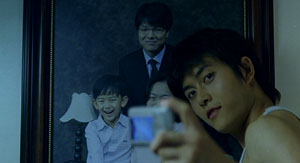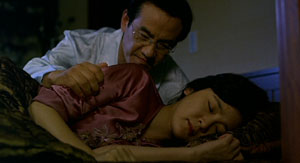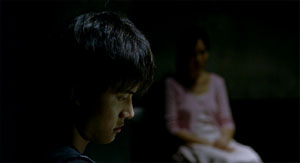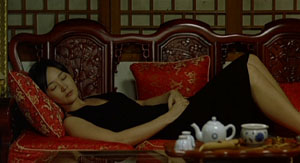Kim Ki-duk started to get noticed at international markets with The Isle/Seom (2000), in competition at Venice and at Fantasporto. The Portuguese festival gave the film the Jury Special Award and Seo Jeong won Best Actress. Some of the characters' deeds shocked the audience even though its depiction was not especially graphic.
Address Unknown/Suchoiin Bulmyeong and Bad Guy/Nabbeum Namja (both from 2001) came to assert Kim as an enfant terrible and a provocateur, causing the wrath of many, including feminists groups due to the way his female characters are (mis)treated; physical violence and non-consensual sex are frequent.
The South-Korean director's last works keep some of his usual provocation but are somewhat easier to digest; a kind of “art house” cinema which is more cleaner and more to the liking of international critics and film festivals. Kim appears to have wanted to win all the three major ones: Samaria (2003) was at Berlin, 3-Iron was in competition at Venice, and both granted him directing awards. The Bow/Hwal, from 2005, seems to have been finished just in time to be at Cannes, from where it came out without any award.
Kim didn't study Cinema but Art. That may be a huge contribution, together with his life experience, to make an outsider out of him, someone always willing to rebel against the system. This is displayed in his characters which often reject verbal communication and show their feelings through violence — both to themselves and to those near them.
 |
 |
Tae-seok (Jae Hi) "gets in" a family. Seon-hwa (Lee Seung-yeon) is subdued by her violent husband (Kwon Hyeok-ho. |
The director's narrative approach is closer to an essay-like vision of cinema, not starting from a conventional script; he develops a concept without any concern for whether its realization is cinematic or not. It's not the characters which tell us the story by defining themselves emotionally — they appear as theoretical emanations without intending to be “humanized” — but image and silence. To speak of “three-dimensional” characters doesn't make much sense in Kim Ki-duk's cinema.
In 3-Iron we are again before individuals not in synch with family or the society they live in. Tae-seok expresses his wish to “belong” by invading strangers houses enacting his life as part of theirs and literally getting inside family portraits. At the same time, his presence will affect (positively?) the homes he walks through, either directly or indirectly.
 |
 |
The relationship between Tae-seok and Seon-hwa will bring both some serious problems. |
As for Seon-hwa, she does “belong”. However, although she lives in a sumptuous house with a wealthy husband, her life is miserable — the character actually embodies a certain cliché of the "trophy woman”, seen only in the “backstage”, kept away from social acquaintances due to her bruises. We read in between the lines that her past as a photo model was at the origin of her husband's interest and that that is also the cause for all the jealousy, violence and the will to keep her locked inside an empty house.
Without actually being one of Kim Ki-duk's best films, Bin Jip is admirably coherent and it can be viewed for a second time with pleasure, as if contemplating a landscape. Even if we regard the characters as mere abstractions, Seon-hwa still confounds us: she rebels at the same time she remains dependent of a violent man. Any change in that life will come up from external factors, that is, from Tae-seok's interference rather than from a personal stand.
The final text on screen before the credits seems redundant, seeking to guide the audience towards interpretation, at a moment when ambiguity would allow a much more satisfying ending and provoke reflection regarding the symbolism in the relationship between the main characters, which evolved from the slow and gradual perfecting of Tae-seok's skills motivated by his wish to “belong”.

